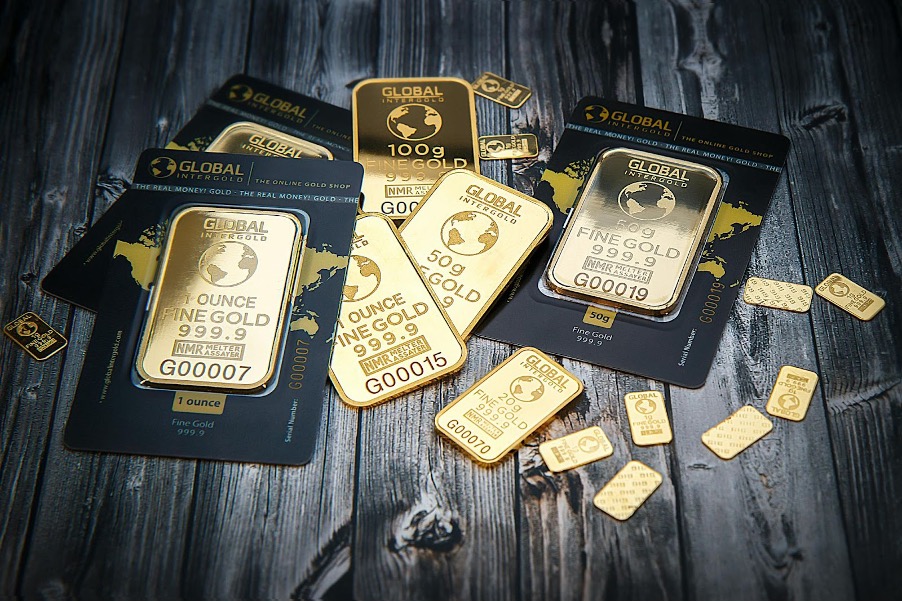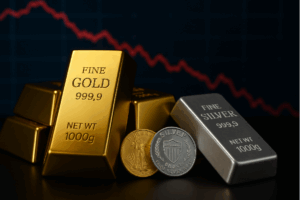In a significant development that has caught the attention of global markets, gold prices have surged to record highs, reflecting widespread investor anxiety amid growing economic uncertainty and global geopolitical unrest. As of this week, gold has crossed the unprecedented mark of $3,500 per ounce in international markets — a level never seen before.
This dramatic increase, while welcomed by gold investors, raises questions about the underlying causes and the potential ripple effects on economies, financial markets, and consumers across the world.
Why Are Gold Prices Rising?
Gold is often seen as a safe-haven asset — a reliable store of value when stock markets tumble or currencies weaken. Over the past few months, multiple global events have pushed investors toward gold in search of safety:
- Geopolitical Instability
Tensions across the globe — including conflict in the Middle East, instability in Eastern Europe, and rising friction between global powers — have fueled investor fears. With trust in traditional financial systems wavering, many are moving their assets into gold, which is not tied to any government or central bank. - Global Economic Slowdown
Major economies like the US, China, and Germany are showing signs of a slowdown. Recent data points to declining manufacturing output, weakening consumer demand, and shrinking GDP growth. With recession fears looming, investors are hedging their bets with gold. - Central Banks Buying More Gold
According to the World Gold Council, central banks around the world — particularly in China, Russia, and several emerging markets — have significantly increased their gold reserves. This trend reflects a shift toward reducing reliance on the US dollar and other fiat currencies. - High Inflation and Currency Volatility
Persistent inflation in many parts of the world, including the US, UK, and parts of Asia, has led to decreased purchasing power of local currencies. Gold, being an inflation hedge, becomes more attractive during such times. - Declining Trust in Financial Systems
With several major banks facing liquidity concerns, and tech-driven volatility in cryptocurrency markets, investors are returning to the time-tested reliability of gold. It’s tangible, universally accepted, and historically resistant to crisis-driven devaluation.
Impact on Different Regions
United States
The US Federal Reserve’s indecisiveness on rate cuts, coupled with a weakening dollar, has spurred domestic investors to move from equities to gold. American consumers are also seeing higher gold jewelry prices, affecting demand in the retail sector.
Europe
The eurozone’s economic challenges, especially in energy-reliant nations like Germany and Italy, have contributed to increased gold purchases. The European Central Bank’s cautionary tone on monetary policy has only added to investor nerves.
Asia
In countries like China and India — the world’s largest gold consumers — the surge in prices has created mixed reactions. While investors are rejoicing, retail buyers, especially those purchasing gold for weddings and festivals, are feeling the pinch.
In India, gold holds cultural and economic significance, often considered a symbol of wealth and a preferred investment during uncertain times.
Middle East
With oil prices fluctuating and regional conflicts intensifying, investors in Gulf nations have turned to gold for wealth preservation. The Dubai Gold Souk, often seen as a barometer for consumer sentiment, has seen a marked decline in purchases due to the high prices, but investor demand remains strong.
What Does This Mean for the Average Person?
- Higher Jewelry Prices: Consumers planning weddings, religious events, or investments in physical gold may find themselves spending significantly more.
- Investment Rebalancing: Financial advisors are recommending increased allocations to gold within diversified portfolios.
- Global Uncertainty: The rising price of gold is a sign that investors around the world are bracing for turbulent times ahead.
What’s Next for Gold?
Market analysts remain divided. Some predict the price could hit $3,700–$4,000 per ounce if tensions escalate or the global economy continues to slow. Others warn that if peace efforts stabilise global regions or if central banks intervene with aggressive rate cuts, the demand for gold could plateau or even retreat.
Global Market Reactions
The ripple effects of gold’s ascent are evident across global markets:
- Stock Markets: Major indices like the S&P 500 and Nasdaq have experienced significant declines, reflecting investor anxiety over economic policies and geopolitical tensions.
- Currency Markets: The US dollar’s decline has led to gains in other currencies, such as the British pound reaching a seven-month high.
- Commodity Markets: While gold shines, other commodities like oil have seen price fluctuations, influenced by broader economic concerns.
Conclusion
The current rally in gold prices is not just a blip — it’s a reflection of a world that is deeply uncertain. As inflation persists, conflicts intensify, and trust in financial institutions wavers, gold is shining brighter than ever. Whether this trend continues depends on how world leaders respond to the challenges of today and tomorrow. For now, one thing is clear: in uncertain times, gold is king once again.
(Disclaimer: The content provided in this article is for informational and educational purposes only and does not constitute financial, investment, or trading advice. Arjun Global does not make any guarantees regarding the accuracy or completeness of the information provided, and shall not be held liable for any losses or damages arising from reliance on the content. Always conduct your own research or consult a qualified financial advisor before making any investment decisions.)




